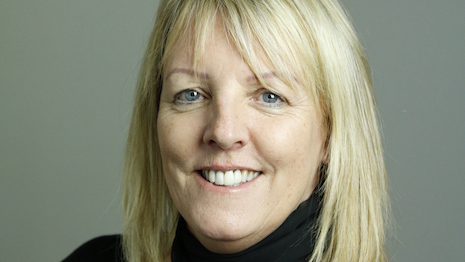By Alison Angus
Market researcher Euromonitor International revealed the Top 10 global consumer trends for 2018. Some trends may turn into entrenched consumer behavior, affecting the relationship between brands and consumers.
Here are the trends:
- Clean Lifers: Consumers adopting clean living, more minimalist, lifestyles, where moderation and integrity are key. Clustering around educated 20- to 29-year-olds, a new generation of straight-edge consumers has grown up knowing deep recession, terrorism and troubled politics, and has a wider world view than previous generations.
- The Borrowers: A new generation of community-minded sharers, renters and subscribers is reshaping the economy, making conspicuous consumption a thing of the past. Rejecting material goods in favor of experiences and a freer lifestyle, which has characterized the buying habits of millennials for the last few years, is a trend that continues to evolve and spread.
- Call Out Culture: Whether it is airing a grievance on Twitter, sharing a viral message or signing an e-petition, consumers are having their say. Hashtag activism, while not new, is rapidly gaining momentum as Internet usage explodes and more people have access to social media.
- It is in the DNA – I’m so Special: People’s growing curiosity about their genetic make-up – what makes them so special – and a rising interest in personalized health and beauty are fuelling demand for home DNA kits. Target consumers range from the “worried well” and those curious about their origins to hard-core fitness and nutrition fanatics.
- Adaptive Entrepreneurs are increasingly seeking flexibility in their lifestyles, and are prepared to take risks. Millennials especially have an entrepreneurial nature, shifting away from the traditional 9-to-5 career towards one that affords more freedom.
- View in My Roomers in 2018 will be connecting perception and reality, merging digital images with physical space. Consumers will be able to visualize products before they try or buy, both in-store and online. The arrival of even more sophisticated smartphones in 2017 gave View in My Roomers access to greater functionality, including augmented reality (AR) technology.
- Sleuthy Shoppers: With further political upheaval last year, consumers’ trust crisis is deepening and leading to greater emotional involvement and action. They remain sceptical of mass-produced products and the motivations of the companies that create them, but are tired of hearing empty rhetoric and soothing words of assurance.
- I-Designers: In their latest manifestation, I-Designers are assuming the role of creators: not just customizing mass-produced products, but shaping them to their individual preferences before production. Consumers have long looked to choose between different colours, patterns and details, but I-Designers bring this to a new level. I-Designers want to exhibit their creativity. Instead of choosing something that is the same but different, they want to create something for themselves with which they personally connect, something that is truly unique – just like them.’
- Co-Living: The Co-Living trend has blossomed amongst millennials and the over-65s in the residential space. It is a form of housing where residents share living space and a set of interests and values. The trend stems from hyper-urban hubs that have embraced the sharing economy as a lifestyle choice.
- The Survivors: Ten years on from the credit crunch that heralded the start of the Great Recession, the frugal mindset of consumers remains entrenched. Despite improving economies, rising incomes and falling unemployment, the gap between rich and poor is highly visible, and those caught between low pay and meager state benefits and high living costs are still struggling to cope with austerity.
Health is wealth
According to the report, people’s growing curiosity about their genetic make-up and a rising interest in personalized health and beauty are fueling a global market expected to soar by 2022.
A new wave of companies aims to provide consumers with genetic findings related to their general health, fitness and nutrition, with the market growth being global and competition in the largely unregulated Chinese market particularly intense.
Although the consumer market still faces hurdles, such as country-specific regulations, things are improving on the regulatory front and with the market continuing to evolve, it is likely that further innovative startups will invest in new technologies.
With AR having a wide range of applications in various industries, the potential in the mainstream consumer space is vast, bringing the benefits of in-store shopping into the home. We forecast that global Internet retailing value sales will increase by a further 3 percent in 2018.
Online captures consumers’ interest with the convenience of the hassle-free, anytime, anywhere shopping they crave. The ability to see and touch products before buying is a bonus. This is in part why the in-store shopping experience remains appealing, and in 2017, 88 percent of global sales in value terms were still made in-store.
In 2018, consumer expenditure is expected to grow at its strongest rate since 2011.
OVERALL 2018 will see consumers continuing to question their values, priorities and purchasing decisions, deepening their engagement in the brands and issues that matter to them.
Alison Angus is head of lifestyles research at Euromonitor International, London. Reach her at [email protected].
{"ct":"LGr5+5AOZEUujMavuKTLS9Jcgodm4o+DKZZ3XfkcJuDFX4EzGUqPo\/6zijVscgGl5Lzy4Q0TMS7R7jHBWGBWwmmhk7cFx1C0VK\/q\/4y2FoP2dKL\/vw1TzsjRxgStJ3kOdDrfbi+hy2gijtb6fnV8qeXqEJuEXKHNStq\/ZJaWIFCnYnCeXyTss26BtNdz+z781z6KmwFyTfgJ+7RekjFqAVlx+YJZwXSOmzEdGXRokh7Rgil+QoNFXbeO+wooJMHv\/pHvUvXyzS7pzSo\/btt4gR7CFDjL9ckBvD\/sAjNE2WMGc8ZjeD0mnHgvZilei2wD3bC5IB0ph7cPq8ouOZY6G\/HlDoHIH5KTjWABcw7NIVJ7pRPPpMae7BIYWa\/8CUaRk7HcT806vAyRu\/RyBf2RJw\/RiTxWbiDMxF8xxt+kVQmAkPUn9nxpC2T1deuHDEjnxr3PAmqtDrZ1YGw8PDTwHxYnvbC9p61ESZdzO4mEQYEH0A+d5KyQ1oA\/Bo52XJIr9lxTrd9zp6xdFFLHMSMNZ66CdgJDU4IBQGLQPW\/No38dsgjJ\/YDu6cevz0PvYtySEJ\/Hrui76X+4O20roVdMzyYCj8Rgv8MIzrIWTNA1geik3Q6EcyAHPDVRkFJU0ukErejATiYnK3ahpU0naVg\/NAreFxJjIHIPgPkDICHW3U0+wNP43wFco4+F9RvKL7MEpKmtjda2hBU0GMQlpC6A0XtkwgQKLut7fbAnlhFk1euLTdhkWvLbxQUzD3f7JeJ5h+FjgNMh5YyXB41GCkkOhxNPs9bbU1CJR9dwkVgssqntFKG2deHFGjk+O9jYqZOW4j4+voQL+u0CkaS9MnA5gYXbm8v6cZ7Q+BcwlfXYm9Wo9d\/9bxmP4jW4WULepY5e9t4E\/TLbpu58NmUIC2zzQESKFPhhM999GvubN7tAa2e+Y4M5lJ\/EPG4q3gTc47VikugHvEPkmYygb0DLXE2VqdsH8ImenNfyb8zhzRhwSI4DjQJ3IwgddGavQS1u6yaqnccI2X703QoLSCBigaKjwhFXOYcL5wrHM1Y3ch1lGVFOYOUGdTICtB7EX1NQke9PbdCR\/oNJAQQeL\/RK2fmoREu3LxXXclXbEkS42IQv0HeQdrJpDtCmVFVbq4\/qSAw4ZjcmxzGeNRbQuHo3mrAynJ+c5fNWWImLwx5Zp2SWWYa1QMD3\/W039TuLNzECWYt+tOjBSivnh4oGfaveVkseWzWrSlQQacy1eqHZJ8DtrqfGdDH+segS2rgYzoXaG86erE22AJg2oWncONI\/GyU66hnZdZ+McXxpIL0\/NMRhAR0LVLWNGVyRWYBJGGWkeUKf9om7a7PT47SSeDTq7geRj1h\/4G2oxJrlkauRUfM12B616bPnml4qoU0BlS8MaY7EhDIFwO8gjuLg1P8vUT4IvLXaOL14pQ0B0UHhozRrCrTJsyqtUaQsHH3QlMkNnz0u6Adc5URRSiksYAHWTJNND\/2RY3zhFQS0ywhjxeZ25uAQv0qOUK1AZnmLgAQ59Z9WcwLdPs6tMT4WCrjRRCjqTgJZoJxOhQcfdiCgAi1qvC17gvx7vBVKnf4Nf1OJCIvLYiQkN8vHbfpTDfo2uWc4cV5Hg7TepSrE0kbhNOkN7A\/j2Umpd+B3RapO8yqrIqUZjzhvdCc1rVZgqQmfts9gsqwv3l4+6XuI1ch9xE3trGYN6YmhTQ8OFzNENdSnRwDVpTfV5TpKtj7lEgx0yA+we7vcifnBaR\/g0+Nm6RrhQcX+9E7iO6lHFZ8xdIbjeNuUQf7AJT0fYrlBYsrWkKVDAyxFyskZMEWlRaRvx7X3aVWxE0oZZXmR4DVBwfVclwM1nbkrXuJYmJC0ukQBnQBQ2txIjtb9U8Fd0mZDjZOjfZ8VWk7T8x7glcJGi1P7rQzzQaTBb6vwE6ISlLKWJLpD3Q3b8r8ryDbhOifbrat4i72PMX4wZiU\/NFNa0JbAhg3MjT6iqpkHXKg\/ZhX3erJr5KZIFRNloIF6d3K\/1SDrHLhRw8GstvLISb\/MRKongp5r05RqcbWoJgw8AzS9fg3UBoLd0vUjVFOLs5Y+GJQgV0rJ\/jItsIAil3iGCLcOMJ84Z2UTIGfMF0k7FUHXpUSxLP+tnfKkTgLQjvnSYuR+pQ81r4MFzYRjYPuFEFX3sVBaMAy36bAi9Ezq2oE5ZsebuDBJgljY5sSlZlOoPCnqlNaeY9X1Wjb\/Zno57QixEz52LDCYtXItINd58PKFEsKumcI\/b0Ca95jjGTQCwPLq0mAulHOmZrcxaaQMierpZJ+sBinItNYgvvltSW6eTD\/oGQQxGYhq9cdX5Egn9caRwWIKCeEekvE4U0x5cbhsWfBX\/7YgMSQM0hnGSHQL\/ohvi9bZvHCWYuL587aFaO5BcVSlT2lCEYwfff9G1vNlhwhWCj6KLyZ6uaqFy6mrxtx1LdZ2aM9P7f5U1CDLngXCB\/EXA9Rhg174k\/7fJGZT4aADDksSXefUEVTU0wEmpLZpueRc+76bRQvtRcioESzpoMMG1k3RW1Ij9jGHt1+qJukXQpSU6cqSfZsOLi0LKoRTr6so8TKAJNjwbdeKRsoAcPAFZiQbdDvr9hF7Ouvvrndu05Knu92+fSDgfaQLDtAnhwGJqom+uYEfBpktuTYb171kPxkD1QkXwLZLtGzYGcur2s6osUZ+EApS1\/C6Tsn3DR3Uy8TowmLjANjw2biFocnlYP\/ukrW5Ux2o8rcoksjLSRaWMm\/mYkMrrcPpzJJ64I6XeSraHyEBanNxhrm2+jTvdNoe41VKUQYpbiJOp1i5DhNXkRxWbp4qlYy8Dd\/Vym3rcDKgQkKXeLvhd\/Y9KPL+04zXlApdqUKhsGOumArVboOBIE+PaavZaQkgt641DZlol3Enlngjj7N1sW8w6DPJY1P\/VPyCuP0DhY8rg1rHaDgce73Kw40DmDJx69PQhKpaeapBRf8K\/yA\/5HnJQMF96t9mNlN4Hpnn4FyGTlKJw\/CQSJQf3j7tyP26nPyTGRVz9IGS2TL0DK0Z0fsg4WceSW3k+i4aT5lMPgmSAQYu0NgFGdU+WpNQWNWsNesDa\/fFtLLl7PAoQpAEC7kDuGEcd560xKJElqdL6Xo8jQxjIFaMtxf\/kKYMgibei\/GgW1eljEbqAf5zN2xD\/7tewAFnnFMN56tqK4SDXEoQGKo0gUai6gCzwvGeosLzX5o9VyjgmJXm60tYk9RGXW8A+QA\/QMn1pIcBMrwFdGi\/09OWzrlhW9zSQQnrZhqBZdRxwppRVlwN8tKoWVXMlK3n\/cWfPycemfEyW8dGtWBVpAIUZXA+nT++iGTCmnQi1jNsD+4FSSr7gDkkDp3QtWkxqnSsfK6DnsGqRwzFYp2HyUWdnafrKWrIo42YZw1NYknOC+GitGSTfuxtmdHw8meEB+oDzqi0aFmYj\/iaji6HgP+p+77HHdDwi3DkncjL2c8Yc4UUb+CmEfMuXtHfFvSrTeQLdSmNiSqoaj8xvnnAP5rzRBHLd2HKelXvvV8xJLx1fZmzVSpbF8522rIwF3g6At5x0T9cw+lEIJd4zhaB4qQSOikxbdCkniW4QQ7616dFDUgRX5aYA5uGmzsheX8\/mHAtpc9tveoCVHItCY+6QP1pnmWFOt+rIwt+0hfD728nhnN3ZS05DHwfBJe+I1gwA9hhFcmZ\/NCf29fOcxsCTqrO7yK3M48OfxXK3Sz182ErkxjJoVh48wskcNFOLLcKOYjetGgwgszV3OHjOmmcBuL3ID0XwINBU9GRsMI1c\/o2O5wyinexQfdP7BmvnvRn9vFXL9QqqmPF8fsBnrBxEn\/kScL7FvoDTnZCcDEmZiGUUuTyxgcnkgYf8aUYwnxAYcUrDExOl7fM6xi9hy0Owh3I+cR4GrGrq+fyKUWBChmRQt2K0ojoqXsZh\/L5sPlDBhRiFPQpaAHpSF\/4qJBrcY\/fAw9gjsNxtbC8FNwEE1Z6uxR0193OinK9pJ7NtpgM4HpFCBEb2IpPGQDCED+GnFLJ2\/\/6gWuAO\/WxwYvuq6lUGrcHp\/RcLQM7E7XqWBP0KOHMn5oeDU\/1za5em+gjAoUJK87VkdISrEtXNB\/8UA6\/2rln0PsvfJtRfg66JaFZuuf3LnTRCF0Lf\/ohCgOKtzM9VkkKV4iPbiGq7uR6hX3MRYtMasdJuv0NNnhc5cjQCaCX2JSmy70LxS3WyRS\/euf4fgD3QW7jpshyZtWOxkRHiD7UsYEq04v7iSur0k\/D3+k2VburHdU8q\/Nq\/Rf0QtGF1toh3XbmzIPbIwWpv2VqZKMtuk93v1T2jd3athk\/U8KPR7gH9bHabH1SassCVUXxEkIEytvq1pTuuCkeaPZXHao337+wQXBMBxdyPB4n6sZjV5Tqs\/sfOeJlNp59+KEE38CbZ4wAkCZFfA89M0k8fC\/olhrUK1NAmzC9yZ0cARFl5jjeWs1FjKimtqJIFNtLb3TyyBu2VpjoBUu1YHJsnYjDWTCyG4V+gBlFeN7csJKcLSvPU4C4zYNtYVrEqpGYtD2DpIa6peYlfWnCRFi3P7Ok14RqbWUI7cPjzAVI5ZWu7lBJc27bXRbZWGXOQNM37bz5ZoxSvDJHkWb7pl9b9sEnDT+IO3zUYS2plkDqsvQH5PpusjfoXGBGccExZiOz2hcQiViOR0mXa4aJIX\/huet0rbCO7G0diMyFGFOd6FdPRvf1x+AEbJUcz88DXyF\/9iscCvBW7k9z78TWhtLuYe7khSe7gFqzpp9f0QLE+VHGhpmBPRYDsZAA4Qd5Tf3BRL\/5V8yx1CnEk9UDOol0Z1ZITqhV32UqQ0v5Lgmlzl4iykpFP+H9d2vQpXkc7A0b2SX9TDAG208ACo+a2PgUNiTPqZ6djkoXiDpJTiTNMZfUkKv5JO7t3GLvnm3wKwoW9DetuhycviOCLBwwbjfiCtWGG\/FIyBjFMQJN6dgXyrjeDcb0VWLfp7uRE3B+JQC5KSeXr9w1inLxZRv7BulTXDATlgV10CIW\/j7fNr9ssOwwhvssjNZMuB+e9fgYeVV1gqHun3MWgnxmqMWP5QtsUFrPjISuj6ZG85Xsbg89lKyMk9DOjnWBP4sd2vHsoQ0LdD+yJjtH\/Rg+B1FE7Ju1O296\/vR8xT+l1kw17y3BooVdE2SlL3iUOpnZX6asqlzfN+TTdmqRha\/sXTE28A0eQ8cVm86g9qOmULfMLcvXKf3N3eVF5D2cGCiAbSnI7cSTuFtoBPH+xaco7YpxoeeoM+PiddYDYJlG+JbwySKe2UkHvCQ96gW0RFafeFtNvV\/Lui5x2S6IQViOuLiAJ5cDCULnbN0lVOsODrx5nmGfovE6PkBjWZIJZskyFlcL7ZD7HysBwFbFeQ2I3KSfD2TnBrk009h627H92FRddETfN0sEL52tzquKileXZ2UV0IJgNU8LJcTAfKI\/fEOUBjYgH\/Ep2miQrocgBF0bVVCdZFwfrdxphJjf0S+vfa0e\/a4NP8eOBZbDL\/wPDVYyFWT7s5Wa1mKYQS8siDzvIo\/bIQEhEuVyxF6p9oorSFPntvD4W1UZXXPy+Mx3UXtRAU7wxNlRyydAzKg3sznVUQWA3Cntl2IGmB1SvCSC0yS\/tENTJ9k2tf1HzAkqgkwhq9JRtdrw8q50vRcBmfdy2wmXfQsS\/Zt9qZphlDBF24mDbw4lmPKJ37zl2eMupNjhCzOPVH7oS7hn0PvrA2UDyCza6qGRCdg\/+DvtLb2fVVcU0XFchBQx0IkpmuAT30+9+lih\/RRXgLp462idjkNKHL+9gyLIU8R04m\/5ZM8c4uLWnNjLYXwDgQjtYNtnNcwKizZlHxST7axijY8AuFfv2gD0QSEfNCgoSi+i1DBsox1Yf08uLqfL\/GhdExHXpJleLCGxop5CORLETaM4bGzKFZ+TNOJzdhWpvyiPF70gKzZIy6F2yoq04dteXjFUc5H5pdCpehKjlAz0bcDDbxQ26z\/AMLxVIk46ZZTyPhuabYb7gCgSWymarpQqjoFryBVmXZjZoj53A46XvIHNh0LWiNdrU9LhotpzyH\/yehhpg3IFNhjEbIyXSXTyN79PejUEMlg\/LJ9Bg8fSmP67flJZHShik5CZ4cEzygJpOph+Ws80FYMgUYbpmEDMFuFa1rTr0tSzyWpd9olTS7zKCgMIA+0FsWgoYE1pgRf7RtN9ykg1qKp+Qnj+sPrUBmkR0kJuAqKWAnNPWMj12s6sQOKJRbc\/usaxkIvQE+UC\/zL3fRGdnXAKaAXr\/2cpB+3tMAla+XnB0sXbGrjHNxjugJ79ajfdKg0w9aELQHhdOXlZp1l6dtgsVTK6\/bZ1tQDXOweAESd4ZzRQWwHaq+4RZSnDbDDcsMlVZuN4Y37hYNPxGK2ZCOC\/\/7sqCE9qn0jHqnCkCYgF03gtafZGk+JXxuvNK2PerzpbDqDf4cEvvB8zZ79YnLmBJV2UeMpSbdFPaFNIkYStN9SvqGX73pDfVGMz+lSPYTdKX8BvM0i8xafK5xBWZ3xOWywU+1WSFu3SV+DHWGZ4QQKB0+M+WkVc\/39E0layOL9s0AU6hdIa4mAFCPSXQj4JdrH84oWcBwCObAbZ8X8JvRD5GaErhlB+JgsZaXVy4iqKiiScKtJ1uit1wFeEQHS\/7rB\/ghNaELSrKSTE7QNtowwfiyhf+ZapsHuakYgszGBlaZtStlQ6BLJgONu8K+BZWANpAXdGOBMbmZ+Ls+U1NJqbrRwjKNy6O4dAcgworE\/f4SPsF6N6teImSJOJBjH7w4KMcYobBLp9UDJJ\/sTZEnnbPvYdYHUSNQfF6sfgDGl1d\/YlrA\/laFr4qXcLFZFI5ZdZZ4jvSH020VAaGVK55Hts3PYgjoFRBmG+gXYQ+WmFdFC+fBEnPJTFryFbW\/ObEe62IewR+IwGTrkf4AQYy45FrplRjbKUtqUqAzMpjIQTF8GqNeFjX0HPuuXDxM4lgMwZGClN59iUPa1Urql4Aq5YYMTefWNGP9ztc5EIoiDTvPDcZLn+LE3Xb62uqaEOIV0y0\/tb\/\/4UEjtjRUi3WMYhnzi+FjMG3jAJYRA+UIyzMH4ypZuuv4sAdAjpPd5ZoAPDIAOzpfY9y6DrExOn2Drg2hv1IMdh\/jQTU\/lLTF9XDxVPDGSKIF1TGIaSSsWNdE7pU87k6tBcL5ELwS8kgkgKZmvPm5xcwh\/B3QxqIyowgGJEwlXFOrQYNHP1gJK9qrCTFWwg3d9wDd0jWmYWUBAbluDGiIS6Aa0lWsqUyyT\/8xbpcfG4TwwNF5LLdXCjnFhBnHTvCxB+G9iKkvONS4P0S2utoTpaZ44BfzJhL9wkS\/13enQXmUPXOZxG5BD+ZcLWHzZ5UfcZcRJfnq1FPcmFEy9saDadYPZ8dGYP4+t6Jprpo2f1\/vIh1UVK1GlZ2LTKGJUx6AJJ1B6ktSR4ZaTmHnn7ggvSVVmVRkKRgclDa\/q4nW\/pi4oL791IG8Lxax\/vrKFrAiZQburZ3KghEnhyQGbkqzELA24Y4K75UVbC1lw0jN5UVerCe01Rbp6Syfx+EyUKRmutajFSDK4kpHpxgWRCDbEOa+ZkLLfw33KBSLRYFZ8t1MQFBLqFp+H+A9\/5uMXiF1XsSMb46BJiVlbLHg5fG3ADs7svc17+3yhbF7VEVPUNdHI5fTf1AW02JGFr12CZZ5KGVmBEiJPvdbJEGMQ4Oq\/OauWRHmr7b2HxSf6k+\/UnqpI8N5FrpNBJy6qrNJqzRFiUtyHECMyZwOF3koVx4S8oQxR21SPmOI9yo640TkPUZzFk+kNvND5ZH\/SvHN4Ys3xFEERr5M4UIrdIzgErdgzJLJp3d0fyfJx0j2TPskdFPYYtmfxRjLciRGHJExlrG0sC\/FH5r4ubaF6sS2pDRkH4RnJLOcYypsgYdCuRA1SVU0dfs13kgjnRfLicvZAfnG\/27UOXUyY7RPWetezsVP+9sAZ0AF24qqz0RMbBR6nqfjXWCihWUp1Jtlg38FMbvhFHc77doal\/A6Po2lrxzfemsLsY4WgLEiIz3MUc163MvH0IpeN\/+4Twb6o6qgMztT\/GMrckiS1oR57IZVAb9C+E+yAsxZ6lBpjHECefXnIyPziY\/aJqp2TDYYmK5u3iXJJGzTApvgxE751HWEweuTeMiDM3a3chwXBAuAHw0cEWa0AUHz90B2Yb\/\/fhE1OuW9HhMUaj+N0pXlAR\/0aWTQ9Izd3dhzXAwR+JVFWsbORWqZ0OIoVDhvtQTCdYYrF5iPZ1DSVdzdxt+iPPWSBh7b48C4W0BnfM0C2TfzQIDJ+UJrUDKNL2rc74E\/Ee\/xBJ3GuPcKdUlEDkny7FXeukFGs1ZiIYy4VkVjZDIuN+vPTwVKgDM1JlPmO3TtcW2K4ap9XXfOITxfkknvfKjX2wj5YMYqD3T9QlaE2H3u5gzXC5aOcLT0Aj18u8m7voCv6fk1YzCf+6FfVOAWxPfG1\/6cEcKrFYYV3pm4KaL7GBrBY1hRryWVMzIi0UP9bfpcLR5O32w+xxkPqYIR+IuO7FH0SFLJn61cZykDtq2BLEev1nctOO2jnP8Af8mUmIeA3D3gD4lNfcb4xjLSwDethFa5PyriqGnctryQdMJh0JZjKye9v+kQRgOZTfvFFDM4JbhY\/luyI1e6rT0llSNzA\/tNqUEk6RgLw+c7Ljfzaj+ikReOrzVGSevYlT2TKjrkIzT0izXTWFutsJWG9+q8vxn1a0Gpd4qx5CbmAbAMUIZcKCVB9gK9J86Fi7opKJE6sC+WV8\/PfNFjHs\/ni5mj+JewbWxYKUqwowx+kdYPh+TSqlLn5WV4G0SUgECk\/Qo1qBZpeiFvE2a\/BppHSXC3jfFOEz4vmEUGfSDmy1M+tQc6n6Ybg45mV40mulZxm4jrT0SPbbfFPvMqr0FrBdnbraOQb3Wev6k58nFzjSCw8jLSaCs89\/hKfwldGd67laBalCTNLwpxZUynzsdu43OgZMm9ho1sNfeHt+HWFe0I5NFPNJ97iDdJ6IxPgrp0MT5QaAkBslA0u+evEm\/j0K0\/X0pX8SIq2PjePGwnwmAjGJcb2mG2TMZNF2Vn8O69xBUtXJGdueAKLcoKycj6oEvpj54PG3RUUZsCsgPwm1i\/YnSWOfUeNU\/yhqQjTyYhVMzkagQDxS2Yvjv5q2YUwxS0I5ZnOfQf\/NueVKq8+Qj9A\/zK3LAlFPUmG0sGFQ","iv":"9e9a50744407b02b83144a9c729223e7","s":"4c362a154dc6998f"}

 Alison Angus is head of lifestyles research at Euromonitor International
Alison Angus is head of lifestyles research at Euromonitor International